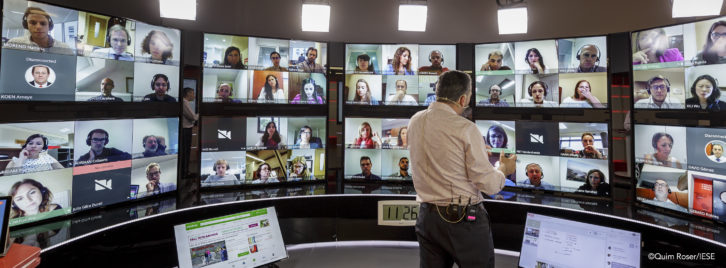
Higher education institutions are investing in a wide range of learning space technologies, according to a comprehensive new study by Futuresource Consulting. The research, conducted in North America and Western Europe, comprises more than 300 interviews with university IT and AV purchasers, as well as bringing together data from public information sites, university websites and national government statistics sources.
“Universities present a large and growing opportunity for technology vendors, as collaboration tech begins to conquer the campus,” according to Ben Davis, principal analyst at Futuresource Consulting. “From wireless presentation solutions to lecture capture systems, interactive displays to microphones and beyond, students and faculties are demanding more from their lectures, as content and learning trends evolve.”
In both North America and Western Europe, microphones and speakers have the highest penetration of the technologies under review, which are well-established in classrooms and lecture theatres. Wireless presentation solutions show the strongest potential for growth in North America, with Futuresource market penetration forecasts to 2021 showing increases of 43% and 30% in lecture theatres and classrooms respectively. In Western Europe, video conferencing systems and wireless presentation solutions both show strong growth potential.
“Wireless presentation solutions, which are standalone units that allow personal devices to share content wirelessly with a meeting room display, have a strong use case in education,” says Davis. “As learning becomes more collaborative, there is a high demand for content sharing in seminar rooms and lecture theatres. This is being accelerated by the wide range of student-owned devices, running a variety of operating systems. As these solutions can allow any device to present and share content, there’s a sizeable market potential for vendors. By 2021 there will be close to 200,000 wireless presentation solutions installed in higher education institutions across North America and Western Europe, up from less than 150,000 in 2018.”
The increased pervasiveness of technologies that can provide video-based solutions also presents a range of opportunities for students and universities.
“Common use cases for video conferencing include making online courses more accessible, enabling students to collaborate better on projects, connecting with remote subject matter experts, and the ability to hold office drop-in sessions online,” adds Davis. “These applications bring significant cost savings and increase the quality and accessibility of courses on offer. As a result, the video conferencing space has seen volumes soar and interest bloom in recent years.”
Despite all the activity, video communications are still a relatively niche category with many possibilities yet to be realised by colleges and higher education institutions. This means the vendor opportunity is still partially untapped, with plenty of scope for profit still remaining.
Conversely, interactive display solutions, which have a significant foothold in the K-12 education market, are not trending as strongly in higher education. A greater focus on small group learning, collaboration and discussion, and less emphasis on teacher-led instruction, means universities are likely to pursue other avenues of communication. More recently, enterprise collaboration providers like Cisco, Microsoft and Google have launched team collaboration displays, which combine video conferencing with interactive displays and enable in-room support for conferencing platforms like Microsoft’s Skype for Business and Cisco’s Webex.
The new Futuresource report, Higher Education Market TAM Analysis, identifies the scale of the opportunity for IT in higher education in North America and Western Europe. At 98 pages, the report provides market information across a range of IT and AV product categories, including teaching space AV, computing solutions, esports, VR and MR, cloud services and student ID integrations. Based on information collected between October and December 2018, the report includes data from interviews with more than 300 university decision makers.







